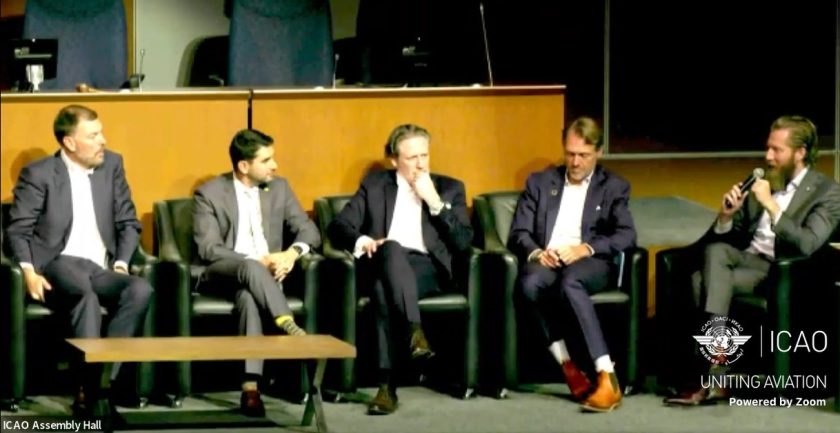A PTS-6 powered Cessna on a short mission could expend up to USD700 of fuel; for an all-electric Beta ALIA flying the same mission the fuel cost would be just USD16 or USD17, said Kyle Clark, Beta’s CEO and founder, one of the speakers on the advanced air mobility (AAM) aircraft panel at the first day of the ICAO AAM Advanced Air Mobility Symposium in Montreal. Running costs for electric aircraft maintenance, engines and systems are very competitive compared to conventional aviation, he told delegates.
Joby Aero is targeting a battery-pack life of 10,000 25-mile flights, said JoeBen Bevirt, CEO of Joby Aero. But he expected battery performance to improve and life-cycle costs to come down relatively quickly following the first commercial flights. “We have 500 KWh batteries in the hangar at the moment,” he told delegates. He expected ticket prices to come down from their initial relatively high levels to prices competitive with Uber services. The public will be pleasantly surprised by the low level of noise of eVTOLs in flight, he said, but even these levels will be improved over time so eVTOLs will be able to take off and land in back yards. But he also said there will be challenges in making sure there will be enough vertiports built to service demand. “Unless there’s a vertiport close to where you are this solution doesn’t provide value,” he said. And he identified other early challenges. In the North East of North America eVTOLs will need to be certified for IFR missions – a predecessor to flying autonomously – and a lot of approaches into airports are very wasteful, he said. “We have to get used to non-normal situations in electric aircraft operations and non-normal situations for electric aircraft first responders,” he said. We should not do the most complex missions first.
Johann Bordais, CEO of Eve Air Mobility, said all eVTOL manufacturers should agree the same standards for chargers and this needs to happen now. He agreed that initial price points will need to come down and gave the example of a new helicopter operator in Sao Paulo starting operations a year ago charging USD1000 for a flight which was down to USD440 now.

Ramy Mourad, Director of Engineering, Future Mobility, Boeing, said public support happens when early adopters show how safe eVTOLs are and how they can add value. But the industry needed to move towards autonomy. “From an ATM system viewpoint this is where we need ICAO’s help in the development of autonomous ecosystems,” he said. There needs to be a way to aggregate aeronautical data which exists today in an ecosystem to support autonomous operations.
Billy Nolen, Chief Regulatory Affairs Officer with Archer Aviation, spoke about the importance of ensuring the aircraft certification process was integrated within the wider eco-system certification process, otherwise there would be a mismatch. He suggested that serious consideration now should be given to what level of support might be needed for this.
Matt Broffman, Vice President of Commercial, Americas at Lilium said developing regulations for infrastructure was still a big area of uncertainty.
Finally, Balkiz Sarihan, CEO and Head of UAM at Airbus, urged everyone to be patient. We need to take a step wise approach, said, and we need to be especially patient about scaling up.




